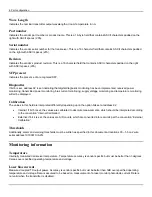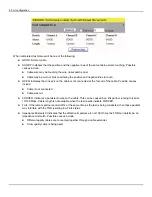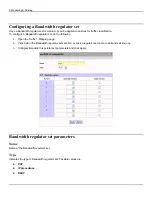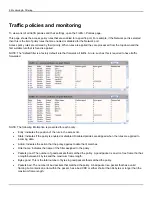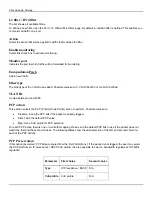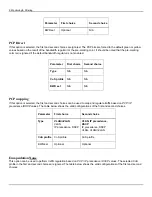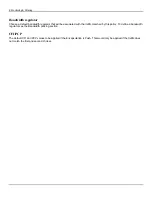
5: Monitoring & Filtering
EVC Mapping
This allows the forwarding rules to perform VLAN tagging on the forwarded frames. Possible values are:
None:
frames matching the specific rule are forwarded unmodified.
Push:
frames matching the specific rule are forwarded with an extra VLAN tag determined by the VLAN ID field and their
Ethernet type is set to the value specified by the VLAN ethertype field.
Pop
: frames matching the specific rule and where the VLAN tag matches the VLAN ID field and the Ethernet type
matches the value specified by the VLAN ethertype field are forwarded, with the VLAN tag stripped. If the frame's
VLAN ID or ethertype does not match, it is dropped.
Incoming port
The incoming port that is used by the rule. The incoming port is considered to be the port where the layer-2 control
protocols will ingress.
Outgoing port
The outgoing port that is used by the rule. The outgoing port is considered to be the port where the tunneled frames,
containing a replacement destination MAC, will egress.
Unique ID
The unique identifier used by the rule when performing tunneling. This value is used when building the replacement
destination MAC address. Note that the same value has to be used on both sides when creating a tunnel-detunnel set of
rules between a pair of units.
VLAN1 type
The ethertype of the first tag inserted in the tunneled frame. This is available only when the Tunneling operation mode is
selected.
VLAN2 type
The ethertype of the second tag inserted in the tunneled frame (for Q-in-Q). This is available only when the Tunneling
operation mode is selected.
Summary of Contents for EtherNID EE
Page 8: ...8 Alarms 199 1 APPENDIX B MIB SUPPORT 203 Public MIBs 203 Private MIBs 205...
Page 71: ...4 Port configuration...
Page 121: ...6 Alarms Alarm configuration The Alarm Configuration page lists all defined alarms...
Page 164: ...9 Performance Assurance Agent 3 Configure parameters and click Apply...
Page 191: ...11 CFM 10 Open the CFM DMM Configuration and select add...

